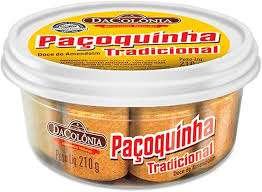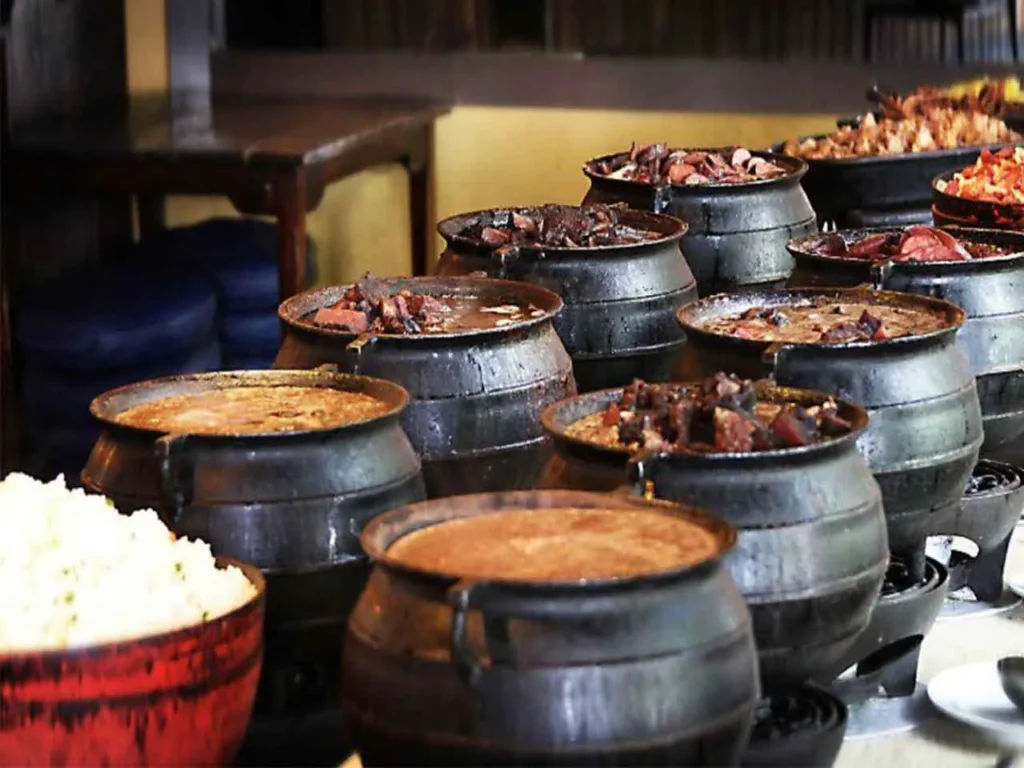Brazil’s Sweet Taste of Tradition and Simplicity and Energy

Among the many treasures of Brazilian culinary heritage, paçoca stands out for its humble ingredients and powerful nostalgia. This crumbly, peanut-based candy has been a cherished treat for generations, especially during Brazil’s Festas Juninas—the country’s mid-year cultural festivals that light up towns with bonfires, folk dancing, and traditional food.
But paçoca is more than just a candy. It’s a symbol of the rustic Brazilian countryside, rooted in simplicity, family gatherings, and agricultural tradition. In this post, we’ll dive into its history, explore how it’s made, discuss regional variations, and highlight where to find some of Brazil’s best paçocas—before wrapping up with a professional recipe for making it yourself.
The Origins of Paçoca: Indigenous Roots and Colonial Influence
The word paçoca comes from the Tupi word “posok,” which means “to crumble.” That’s precisely how this candy got its name—its main ingredients (typically peanuts, sugar, and salt) are ground and crumbled together into a fine, cohesive mixture that melts in your mouth.
Originally, indigenous peoples of Brazil would mash cassava flour with dried meats or fruits using a pilão (a large wooden mortar and pestle). This culinary technique was passed down and eventually adapted by Portuguese settlers, giving rise to both savory and sweet versions of paçoca. While paçoca de carne seca (with dried beef) is still enjoyed in parts of northeastern Brazil, it’s the sweet peanut-based paçoca de amendoim that became nationally popular.
How Paçoca Became a Festive Favorite
Today, paçoca is a staple of Brazil’s Festa Junina celebrations. Alongside dishes like canjica, pamonha, and bolo de fubá, paçoca is served in small paper cups or pressed into cylindrical shapes—easy to grab and hard to stop eating.
Its appeal lies in the comforting simplicity: the nuttiness of roasted peanuts, the crunch of crystalline sugar, and a whisper of salt to balance the sweetness. Kids love it, grandparents remember it fondly, and chefs love modernizing it in new desserts.
Regional Styles and Modern Twists
In São Paulo and Minas Gerais, traditional paçoca is typically crumbly and dry, shaped into cylinders using molds or even machinery in large-scale production. The brands Paçoquita and Santa Helena are iconic, widely available in supermarkets and padarias (bakeries) throughout Brazil.
In the North and Northeast, handmade paçoca is often coarser, made in wooden mortars, and can be more rustic in texture. You might even find versions mixed with coconut or wrapped in banana leaves for added aroma.
Modern chefs are also reimagining paçoca—crumbling it over ice cream, mixing it into brigadeiro, or even incorporating it into cheesecake crusts or layered cakes. It’s common to see fusion treats like paçoca brownies or paçoca milkshakes in trendy cafés across São Paulo and Belo Horizonte.
Where to Find the Best Paçoca in Brazil
If you’re traveling through Brazil and craving an authentic bite, here are a few recommended stops:
-
Santa Helena (Franca, SP) – Home of the iconic Paçoquita, a commercial success with nostalgic flavor. https://www.santahelena.com
-
Feiras Juninas in Campina Grande and Caruaru – During June, these northeastern cities host massive cultural fairs where artisan paçoca is sold fresh, sometimes pounded right in front of you.
-
Padaria da Esquina (São Paulo) – A gourmet bakery where chefs use paçoca in modern desserts like tarts and verrines. https://www.padariadaesquina.com.br
-
Doce de Moça (Online) – A boutique brand offering gourmet paçocas with chocolate, banana, or coffee. https://www.docedmoca.com.br
Why Paçoca Is Still Relevant Today
In a world where desserts are becoming more complex, paçoca stands as a celebration of simplicity. It’s naturally gluten-free, requires no cooking, and highlights the richness of Brazilian peanuts, which are often smaller and more flavorful than their North American counterparts.
Whether served in a rustic arraial (festival tent), used as a crust for cheesecake, or enjoyed straight from the wrapper, paçoca connects people to a time, a place, and a flavor that is unmistakably Brazilian.
How to make the Best Paçoca ? click here to see the recipe!
Like this post? share with family and friends and like it!



